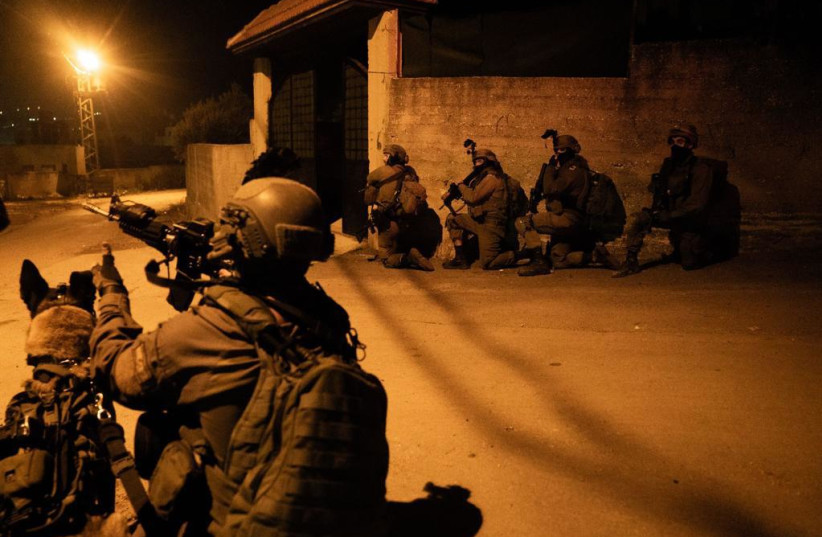IDF Chief of Staff Lt.-Gen. Aviv Kohavi, who retires next week, has notched considerable achievements both in and beyond the Palestinian front of the West Bank and Gaza.
In Hamas-ruled Gaza, Kohavi leaves a temporary tactical deterrence in place that even he would likely acknowledge is unlikely to last more than a few more years at best, in contrast to the more lasting strategic change in the situation achieved with Hezbollah after the 2006 Second Lebanon War.
But what exactly did Kohavi achieve and how did he do it?
But what exactly did Kohavi achieve and how did he do it?
He was head of IDF intelligence in a period when, by use of sophisticated data, artificial intelligence and technology generally, it could quickly identify a vast number of enemy targets to strike at a moment’s notice if hostilities erupted.
He took this hi-tech approach into the IDF chief’s office and elevated it to the point that frontline officers with pocket computers could hit targets themselves or provide data to aircraft and drones to do so instantly. According to Kohavi, this was part of his capabilities revolution: recognizing that properly synchronizing new levels of technologically accurate munitions could alter the battlefield decisively.
In this narrative, the intensity, accuracy, ferocity and pace of the IDF’s strikes on Hamas during the May 2021 Gaza war deterred the terrorist group from participating in the three-day conflict in August 2022 between Israel and Islamic Jihad in Gaza. Hamas has fired fewer rockets in the past 18 months than in previous years.

Likewise, the IDF’s policy under Kohavi since the March 2022 wave of nightly raids into the West Bank to neutralize terror cells has steadily reduced Palestinian attacks emanating from there.
The IDF-West Bank conflict has also involved a whole new level of intelligence collection in order to apprehend terrorists before they can act, but the terror wave has not ended and the IDF is still arresting terrorists and provocateurs on a nightly basis, often in multiple villages simultaneously. This is another test of Kohavi’s claim that advanced capabilities and tactics can strategically transform the situation to Israel’s benefit.
Of course there is a hole in this thinking. Kohavi would be the first to admit that he has no idea how long the current round of deterrence against Hamas will last. Since the Gaza War in 2008-2009, Israel has fought Hamas in major conflicts in 2012, 2014 and 2021, alongside clashes with Islamic Jihad.
With that frequency, another major clash might only be another couple years away.
The reason is that even if Hamas is currently deterred and licking its wounds from May 2021, Gaza’s rulers are unsatisfied with their economic situation. Both the 2014 and May 2021 conflict are viewed as unwanted mistakes by Hamas, but that it fell into partially due to an economic squeeze.
But neither the new government of Prime Minister Benjamin Netanyahu nor the old government of Naftali Bennett-Yair Lapid even tried to make any diplomatic progress with the Palestinians toward a long-term peace.
While part of the reason they did not make progress can be attributed to domestic politics, part is due to recognition that as long as the Palestinian Authority rules only the West Bank and Hamas rules only the Gaza Strip, there is no broad deal to be had.
Except that there is an alternate option.
In 2017, then Likud government intelligence minister Israel Katz proposed building an artificial island with a port and civilian infrastructure installations three miles off the coast of Gaza in an oped in The Jerusalem Post. “This is an idea which, if realized, would provide the nearly two million Palestinians crowded into the Gaza Strip an economic and humanitarian outlet to the world without endangering Israel’s security,” he wrote. “At the same time, it would also advance our separation from the Strip, for which we continue to be perceived as being responsible despite withdrawing from it over a decade ago.”
The Post has spoken to former senior officials of the Shin Bet (Israel Security Agency), IDF and Mossad, and while there is no clear consensus, many of them support the idea.
This Likud-sponsored idea could sidestep the endless debate about the two-state solution and just give Gaza a better economic future and more to lose by going to war.
It would also square with offers Hamas has made for a 10-year ceasefire that would not require recognition of Israel.
That would mean doing what Israel has been doing for the last 13 years, but with a 10-year ceasefire instead of constant conflict. After Katz pitched the idea, Netanyahu told a Knesset hearing that the Shin Bet opposed it.
But former deputy Shin Bet chief Aryeh Pellman subsequently told the Post that the agency would support a man-made island port if it included full Israeli security oversight.
At this point, the reason this idea has not been pursued probably relates to domestic politics, including the heated issue of trying to get Hamas to return the remains of two Israelis and to return two still-living Israeli captives.
But is it logical to push off seizing a potential 10-year ceasefire over the lives and remains of four Israelis, no matter how holy that cause may also be?
These are questions that Kohavi, even as IDF chief, cannot answer – and that even the impressive capabilities he has developed cannot address.
